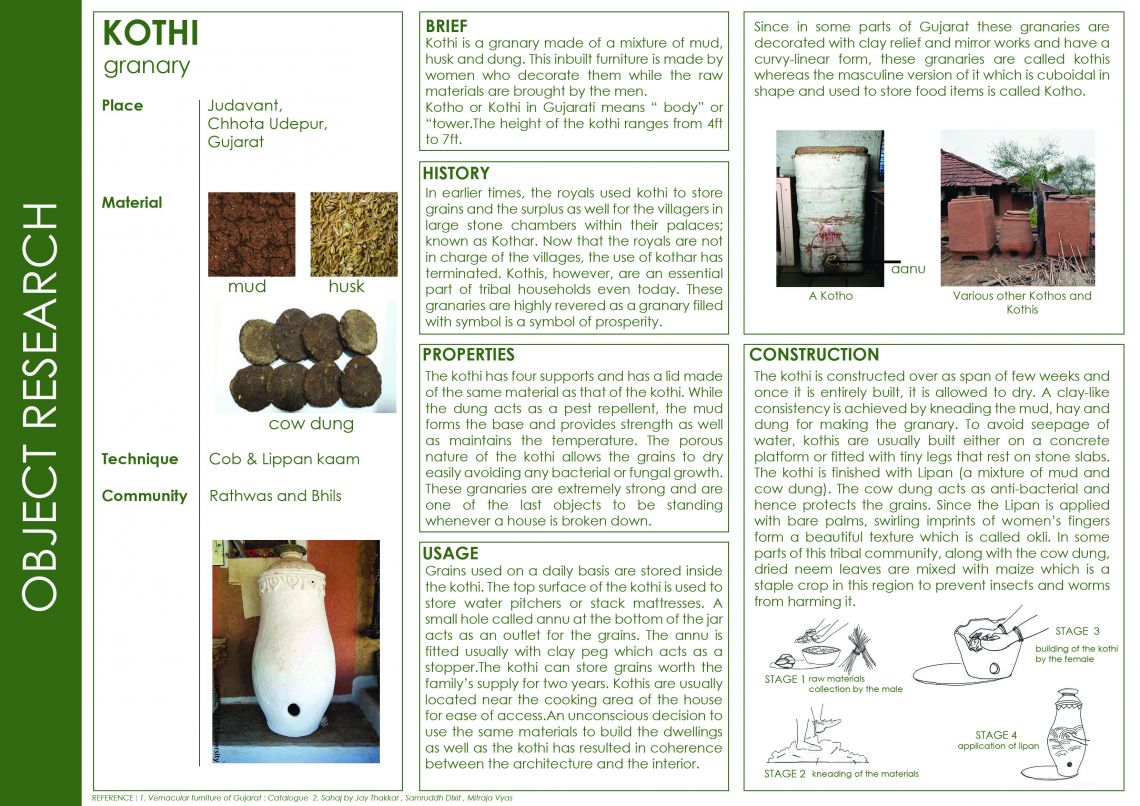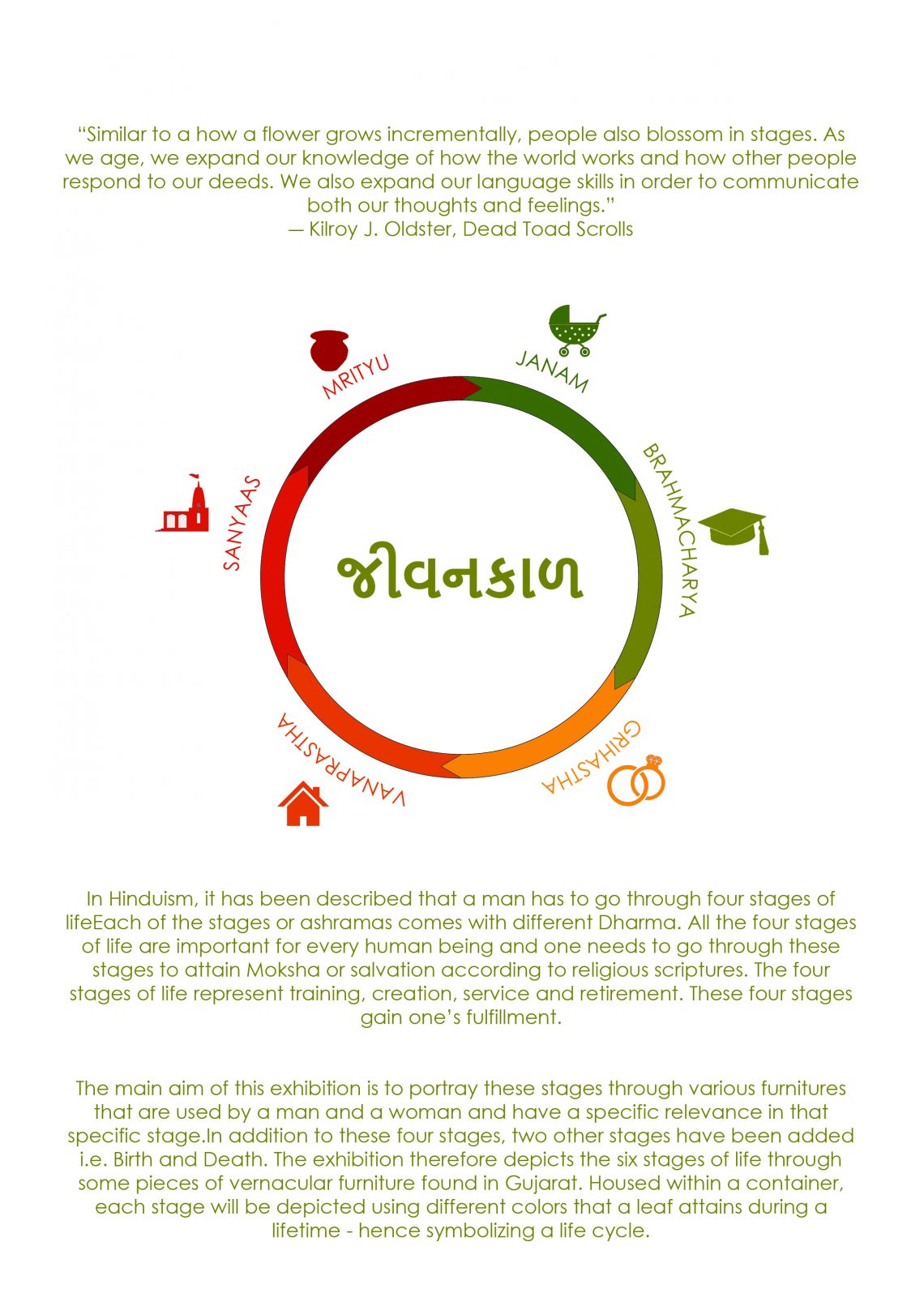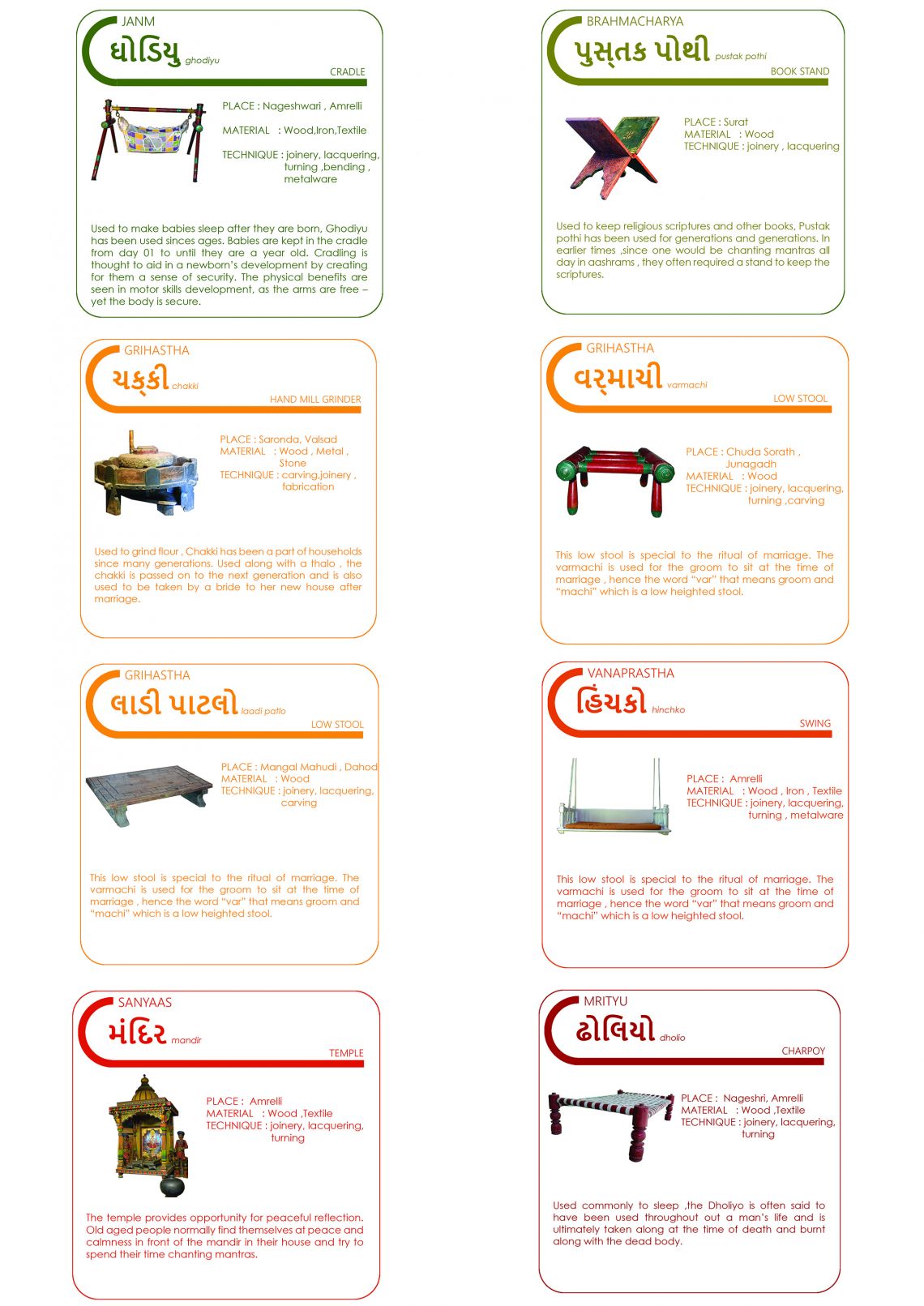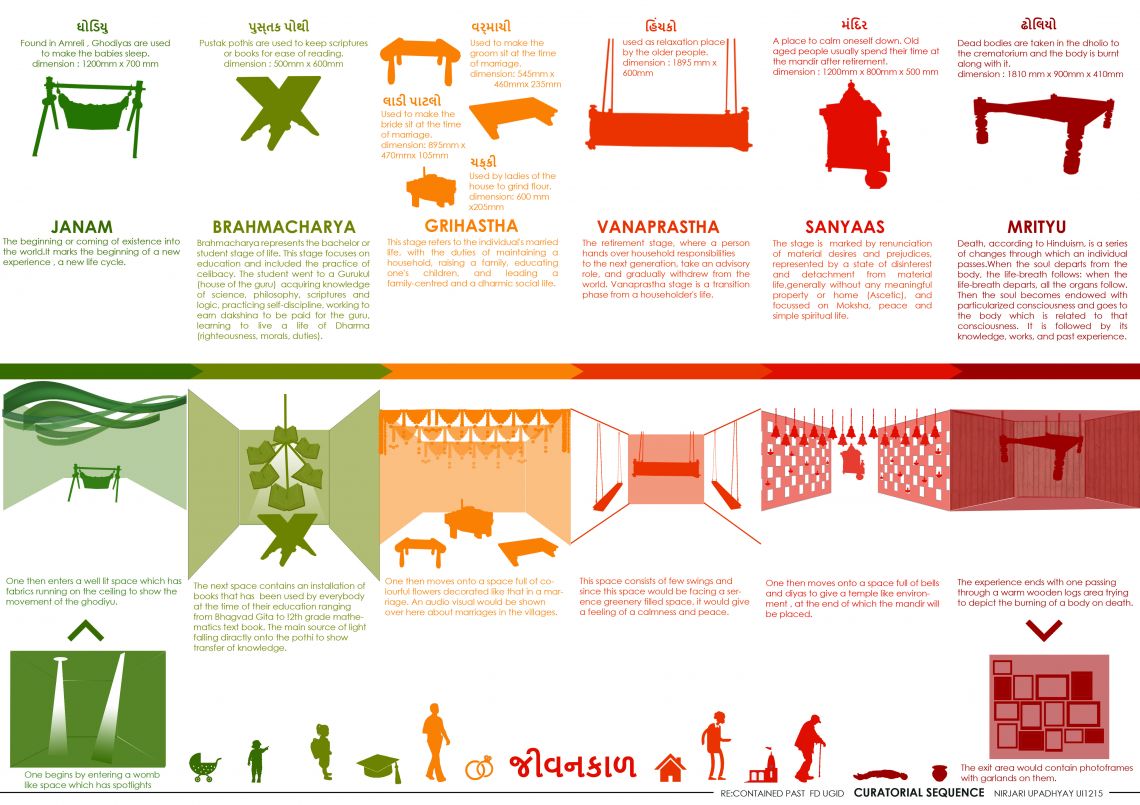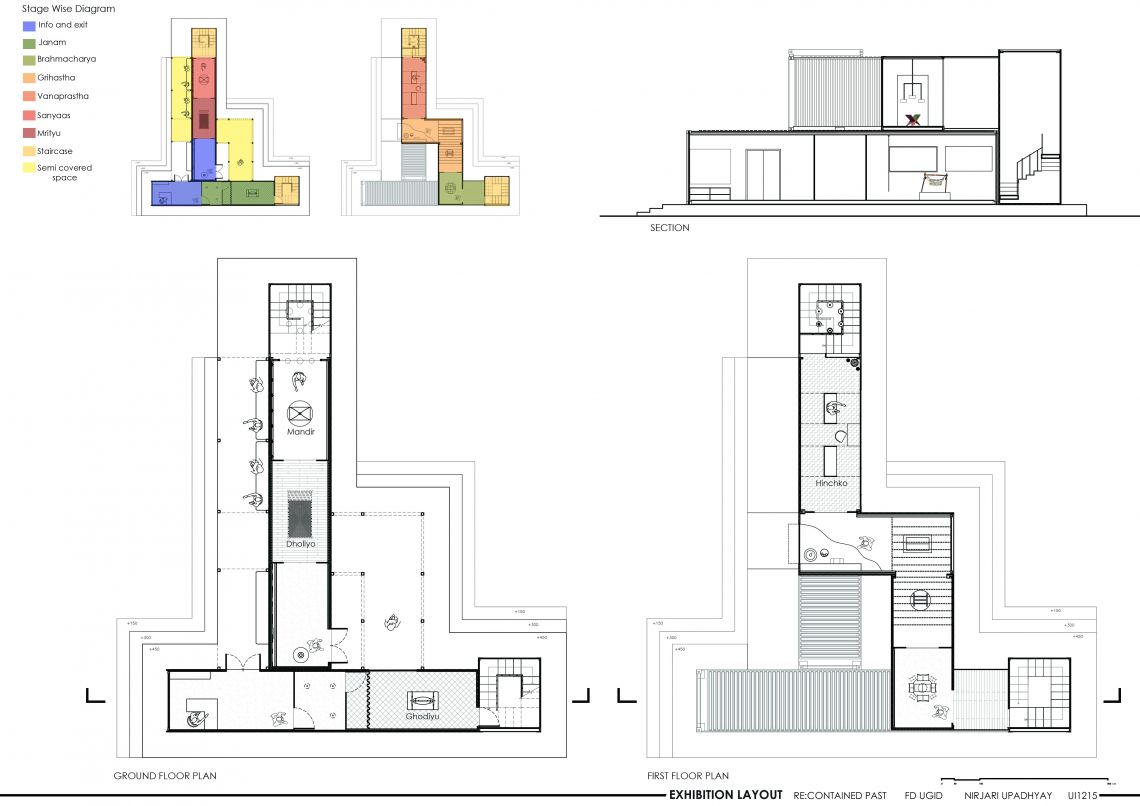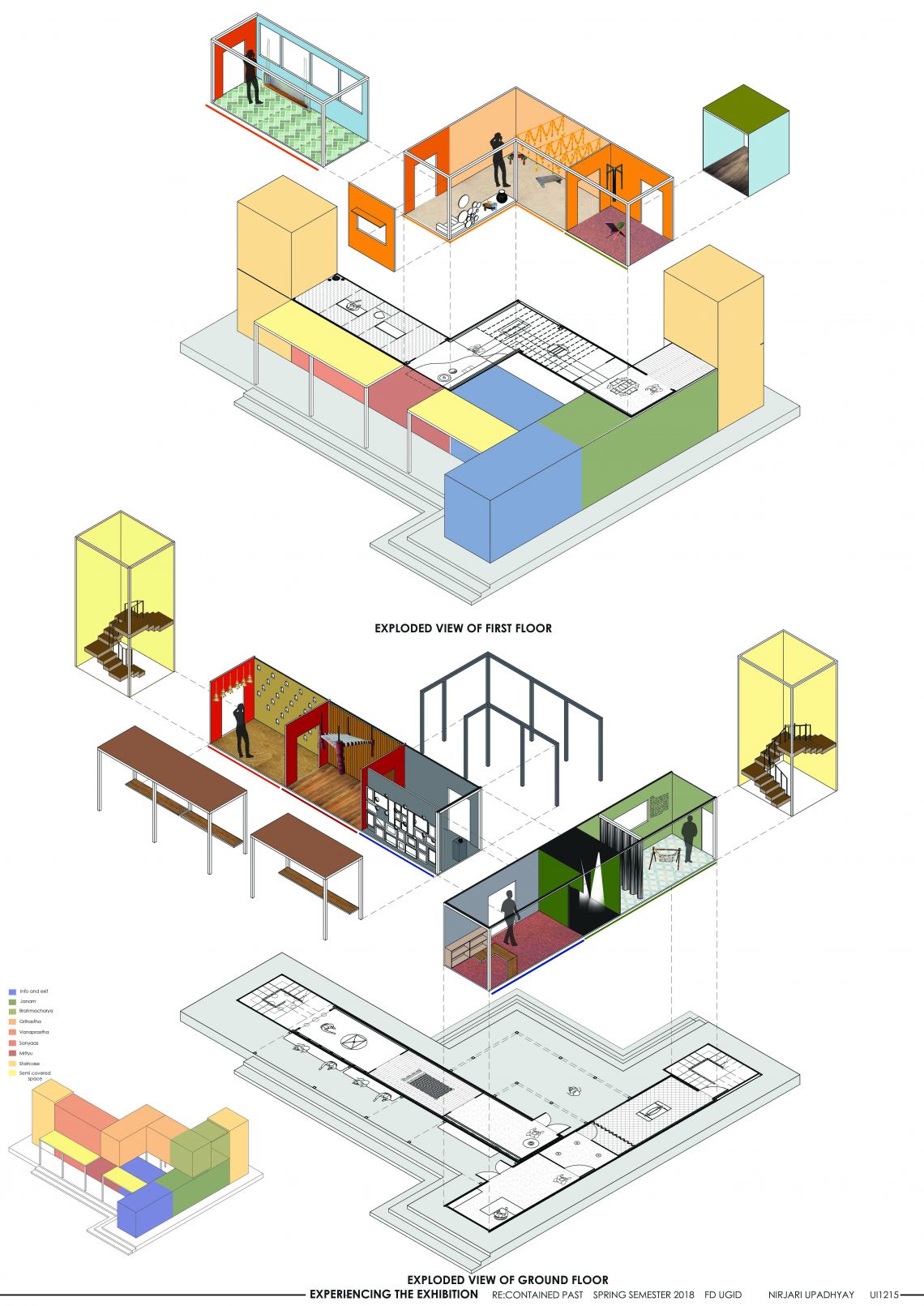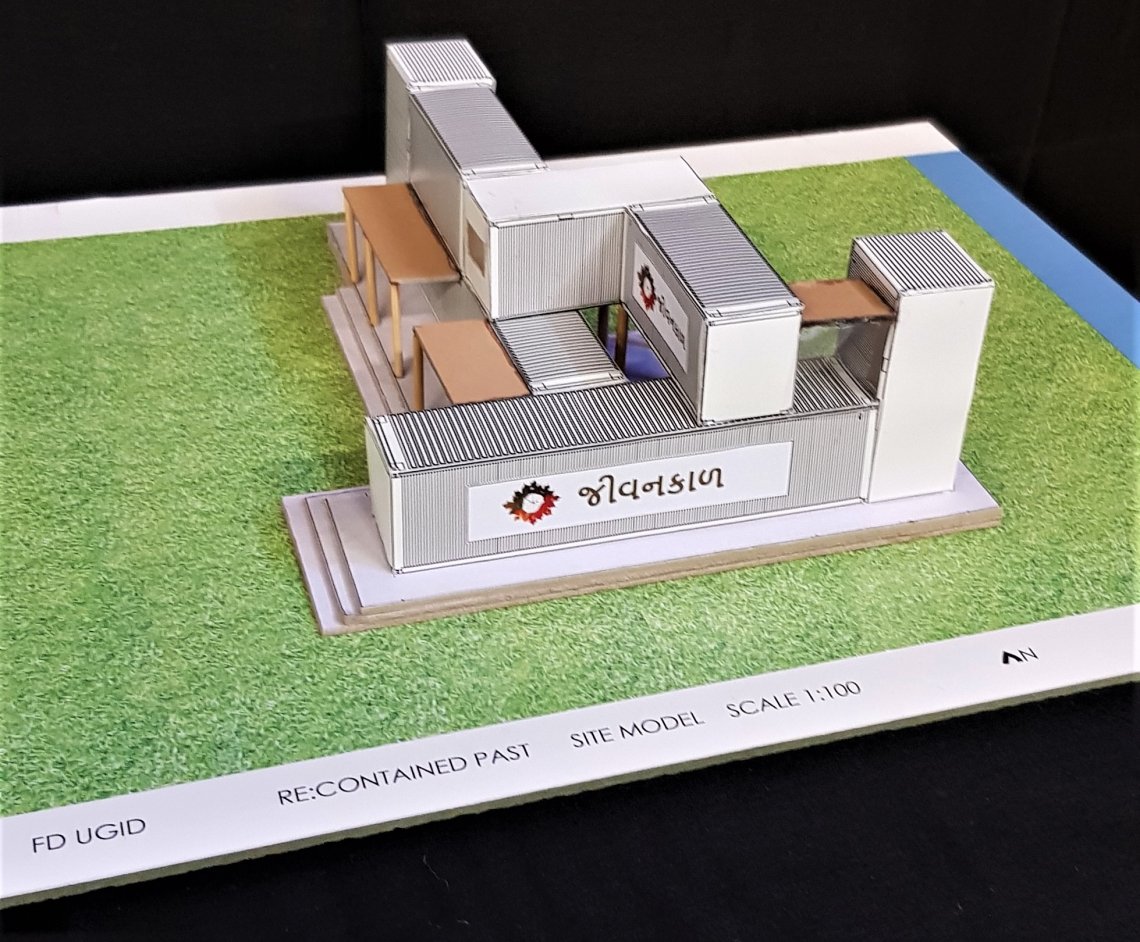Your browser is out-of-date!
For a richer surfing experience on our website, please update your browser. Update my browser now!
For a richer surfing experience on our website, please update your browser. Update my browser now!
In Hinduism, it has been described that a man has to go through four stages of lifeEach of the stages or ashramas comes with different Dharma. All the four stages of life are important for every human being and one needs to go through these stages to attain Moksha or salvation according to religious scriptures. The four stages of life represent training, creation, service and retirement. These four stages gain one’s fulfillment.
The main aim of this exhibition is to portray these stages through various furnitures that are used by a man and a woman and have a specific relevance in that specific stage.In addition to these four stages, two other stages have been added i.e. Birth and Death. The exhibition therefore depicts the six stages of life through some pieces of vernacular furniture found in Gujarat. Housed within a container, each stage will be depicted using different colors that a leaf attains during a lifetime - hence symbolizing a life cycle.
